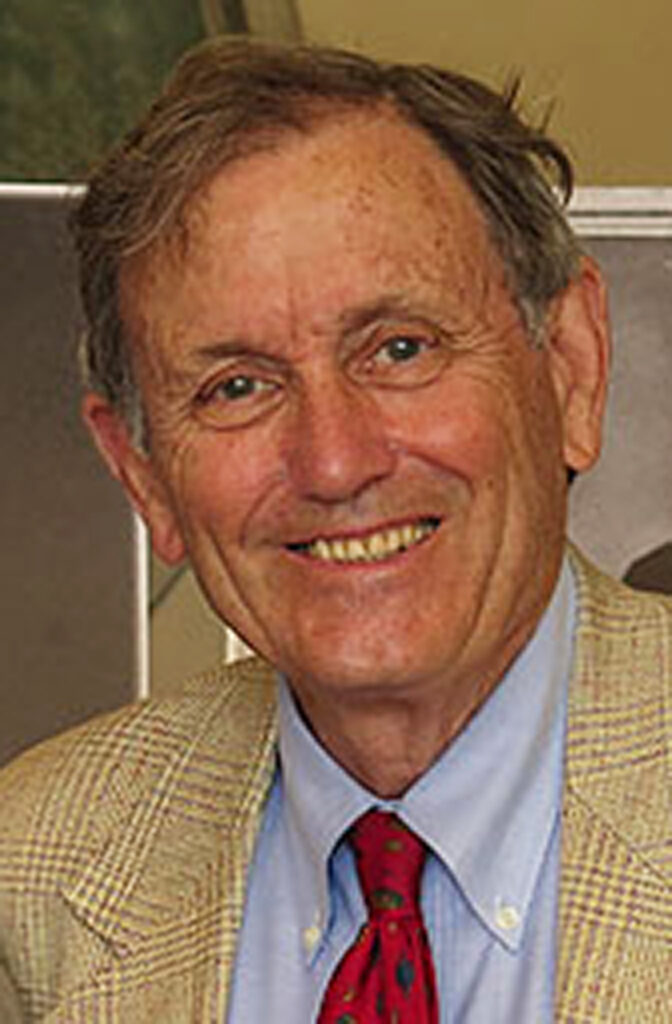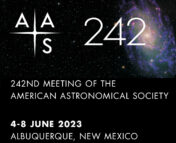In this series of posts, we sit down with a few of the keynote speakers of the 244th AAS meeting to learn more about them and their research. You can see a full schedule of their talks here, and read our other interviews here!
On a tour of the Mount Wilson Observatory, Edwin Hubble’s protege Allan Sandage told Sam Hale, “Your grandfather’s still alive in this building…his vision, 70 years after his death, these people, they’re still charged with that energy that he had and that love of the beyond.” It’s this same energy and vision that drives Sam Hale to keep his grandfather George Ellery Hale’s legacy alive.

While Sam is not an astronomer himself, he serves on the board of Mount Wilson Observatory. At this June’s AAS, he will be delivering a lecture on George Hale’s legacy before presenting the Hale Prize. In his talk, Sam hopes to highlight “what [his grandfather] gave to the world, to science, to Southern California”.
George Ellery Hale is a key figure in the history of modern astronomy. His scientific achievements include the invention of the spectroheliograph and the discovery of magnetic fields in sunspots. “He was one who sort of helped popularize astrophysics…it became a more rigorous physical science under his way of thinking. And he figured the best way to study the stars was to study the one closest to us. It’s right in our backyard,” said Sam Hale. Today, his work in heliophysics is honored through the presentation of the Hale Prize to a scientist who has made outstanding contributions to the field of solar astronomy.
In addition to being an eminent astrophysicist, Hale “was a bit of a schemer, in the positive sense,” which led him to found some of the most important observatories in the history of astronomy. In 1897, he founded the Yerkes Observatory in southern Wisconsin, “but he knew then that, even though it was the biggest in the world and at that time the best, it had a little problem, and that was the atmosphere. The weather in Wisconsin did not allow for optimal seeing…he knew that the place in the country that had..the clearest atmosphere was on a mountain called Mount Wilson, above Pasadena, California, in the northeastern corner of the Los Angeles Basin.”
To fund the building of this new observatory, Hale set his sights on Andrew Carnegie, who had recently sold the Carnegie Steel Company and was looking to give away the money he’d made in the sale. With the money, he founded the Carnegie Institute of Science and funded the construction of the first 100-inch telescope on Mount Wilson. But Hale wasn’t satisfied with just one telescope. “In 1917, he already had the idea about his next telescope…the paint was never dry on any one of his creations,” Sam recalled. To fund the second telescope, “he wrote this incredible article in the 1928 issue of Harper’s Magazine where he talked about the incredible potential of large telescopes to peer deep into space.” The article worked – “By 1929, the Rockefeller Foundation this time had granted $6 million in seed money to start work on the development of what became the 200 inch telescope at Mount Palomar”.
The facilities at Mount Wilson, which included a 60-foot solar tower, a 60-inch reflecting telescope, and a 100-inch reflecting telescope, were used to make profound discoveries. In 1920, Harlow Shapley “found that we here on Earth were not in the center of the Milky Way. We were in a somewhat distant suburb, in the Milky Way, and [that] really laid the cornerstone of the second Copernican revolution.” Further breakthroughs came in 1924, when “Edwin Hubble discovered that we are not the only galaxy out there, he basically discovered the universe and followed in 1929 with the revelation that that universe was expanding and at an ever increasing rate.” These discoveries were foundational to developing a true understanding of our place in the universe, and allowed the field of astronomy to truly explode.
Even outside of astronomy, Hale’s legacy looms large. Mount Wilson hosted “one of the first seismological stations,” which was used by Charles Richter – a hugely influential figure in seismology and Earth science. “And right down about 100 yards away is the place where Albert Michelson, the 1912 Nobel physics laureate, confirmed the speed of light.”
Hale’s impact on the field is truly a great one. Reflecting upon it, Sam said, “in, I think it was 1675, Isaac Newton wrote a letter to Robert Hooke. He said in it: ‘ if I have seen further than most, it was because I was standing on the shoulders of giants’, and [astronomers] are standing on my grandfather’s shoulders. Definitely.”
To learn more about how astronomy has become the science it is today, the role that George Ellery Hale played in it, and why we should conserve historic observatories, tune in to Sam Hale’s plenary lecture on Monday, June 10, 2024 at 3:40 PM CT at #AAS244
Edited by: Alexandra Masegian
Featured Image Credit: AAS

